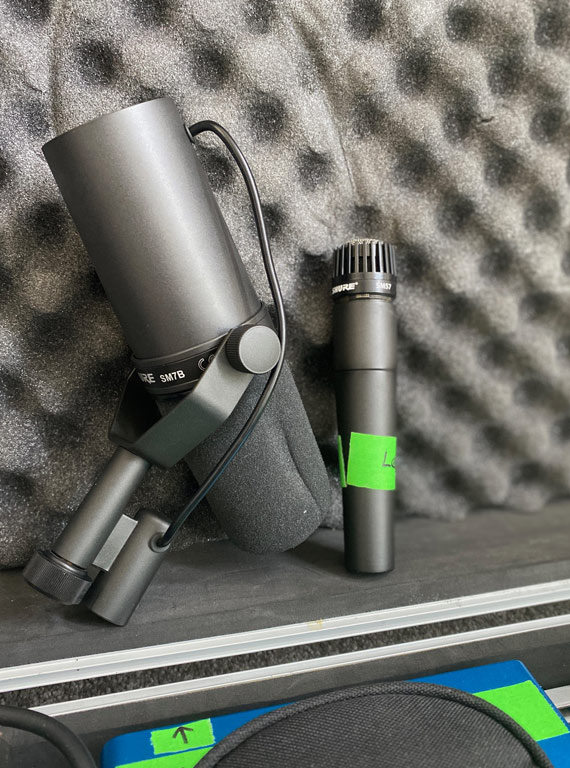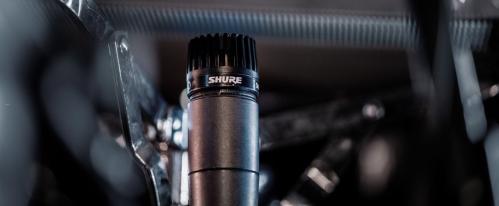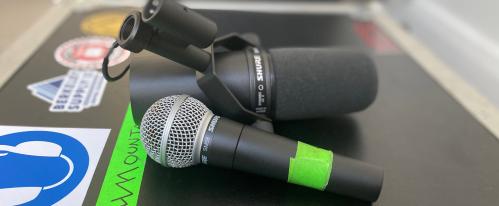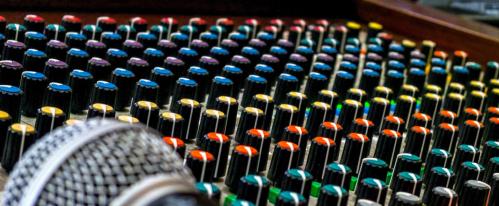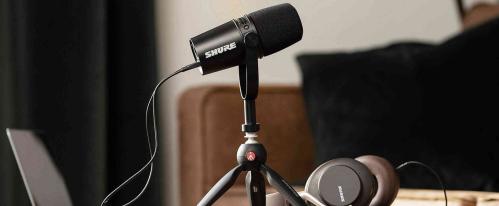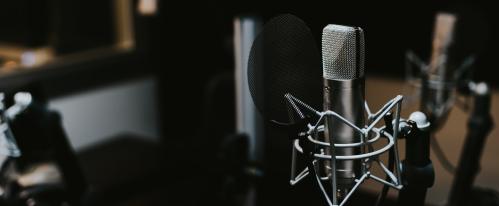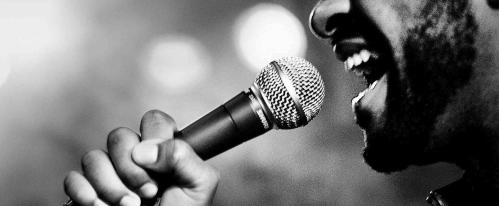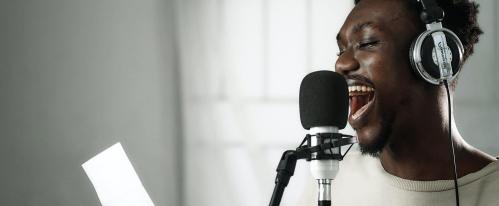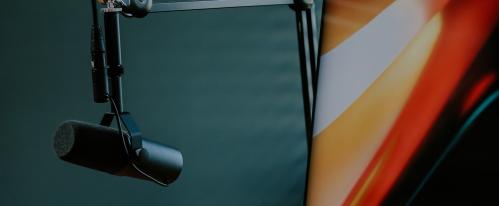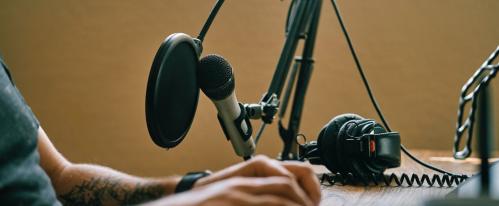We compare the Shure SM7B vs SM57 and find out which microphone is better for you in the live and studio environment, or both!
In the latest of our Shure mic comparison series, we’re comparing the Shure SM7B vs the Shure SM57. Both of these microphones are relied upon by musicians and recording artists of all levels, but with major differences in price and application..
We’ve said it before, but there are key benefits of the Shure SM57 and reasons the Shure SM7B is so popular - it all depends on what you’re using the mic for. It can be confusing when you’re trying to pick one, as both options will suit different use cases, depending on whether you’re podcasting, recording high transient sounds like snares, or laying down the vocals to your next EP.
But one is not like the other…
One has been used by every President of the United States since 1965. Both have been used by Metallica. Both are some of the best studio mics under £500. We’ll explain in a moment…
So in this article, we’ll answer the question - what’s the difference between the Shure SM7B and the Shure SM57? And show you which mic you should use depending on what you need it for.
Disclaimer: I have both and use both of these microphones regularly when playing live and recording/demoing songs and audio. There are definitely subtle differences and quirks you may not have read about between the SM7B and SM57 which you’ll need to know before buying.
Here’s a list of what we’ll discuss in this comparison:
- Should I use the SM7B or the SM57?
- Quick overview and comparison of benefits
- Similarities between SM7B and SM57
- Differences between SM7B and SM57
- Frequency response differences between SM7B and SM57
- Polar patterns
- Is The Shure SM7B better than the SM57?
- Final thoughts and conclusion
What is the Shure SM7B used for compared to the SM57?
In summary, the SM7B is better suited and designed for vocal applications. The Shure SM57 is used for high transient sounds like snares, guitar cabs, and brass instruments.
Although both can be used to record anything you like, the SM7B is better suited to speech, podcasting, gaming, streaming, and narration - any application that requires high-quality vocal recording - thanks to the way its frequency response is set up. But it CAN record guitars, be used in a live scenario, and even record high SPL instruments. It’s just not always the best option for those things when you have the Shure SM57 in your arsenal.
It's also a lot more expensive.
The Shure SM57 is designed to record snare drums, guitar cabs, and high volume/high transient sound sources. It does it extremely well for reasons we’ve explained and will highlight below. However, it can record vocals, is used by live vocalists regularly, and is often used to record acoustic guitars. It’s just better for recording screaming guitars and loud snare drums!
It's also very budget-friendly.
Let’s explain why.
Shure SM7B Quick Overview
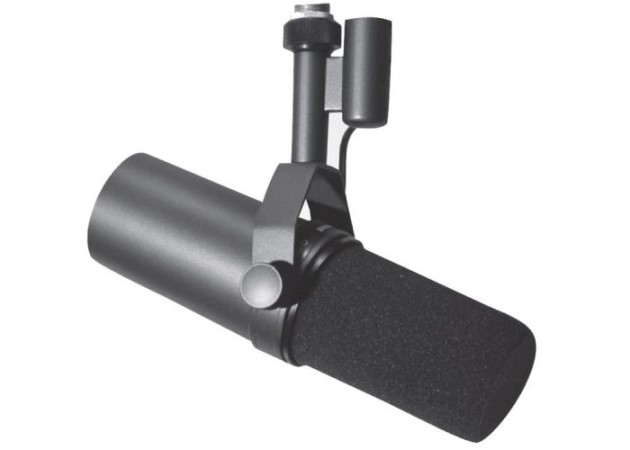
The Shure SM7B is the industry-standard podcast, broadcast, and live session microphone that podcast hosts, internet radio presenters, YouTubers, and voice-over artists rely on for world-class vocal sound. It’s also a dynamic microphone that provides condenser-level sensitivity.
A quick history – 30 second read..
Often described as the SM57 on steroids, the SM7B (technically the SM7) was based on the SM57.
Shure engineers were asked back in the 70s to take the cartridge element (Unidyne III) used in the SM57 and “make it better”. Flash forward to 1973 and the SM7 was released – now available as the SM7B. It was designed as an extended, full-range microphone and intended to be universal in its applications. Whereas the SM57 was slightly limited due to its design, especially for vocals due to the proximity effect, the SM7 would be designed to suit many applications and mask poor recording environments due to a built-in windshield, pop filter and switchable frequency patterns.
This is why it’s often described as the SM57 on steroids – but it’s a VERY different mic.
Benefits:
- An almost indestructible dynamic mic
- The industry standard podcast, broadcast and voice-over microphone – If you want broadcast quality vocals, get this
- Gives you a slight presence boost from around 5 kHz – your vocals stand out
- Offers onboard controls for frequency sculpting depending on your voice
- Has a built-in swivel mount
- Has a removable pop filter and windshield – fewer plosives, less sibilance
- Can be used for live podcasts and music sessions
- Less proximity effect
- Better low-end response thanks to bass roll-off
- Picks up more detail
- The internal shock mount reduces vibrations and protects the capsule
- More flexibility
- One of the best mics for streaming and gaming
Downsides:
- More expensive than the SM57
- Needs at least 60dB of gain to work properly
- Larger chassis
- Doesn’t cut through the mix in a live scenario as much
Shure SM57 Quick Overview
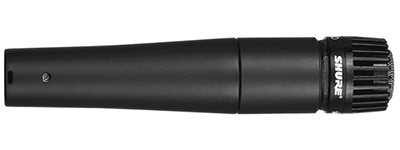
The Shure SM57 is the industry standard guitar cab and snare microphone. It is an almost indestructible dynamic microphone that live sound engineers, guitarists, producers and venue owners who care about the sound of their onstage show rely on to get the best live sound possible.
Benefits:
- It’s the industry standard guitar cab, snare and high transient microphone
- Provides a presence boost from 2kHz to 6kHz
- Is renowned as being indestructible – it will likely outlive you
- Provides accurate, detailed sound at high levels
- Less susceptible to feedback at high gain
- Tight polar pattern
- Fairly “cheap” compared to other microphones, but certainly doesn’t suck
- Can be dropped, exposed to moisture and knocked without fear of damage
- One of the best cheap home recording microphones ever made
Downsides:
- Plosives and sibilance are a little more apparent due to the thin pop filter when using it for vocals
- Does not hide poor recording environments
- Not particularly hi-fi sound at low levels
- Higher proximity effect at close-range vocals
- That’s about it – there are no real downsides!
The similarities between the Shure SM7B and SM57
When comparing the Shure SM7B vs the SM57 we need to talk about the similarities first.
Here they are in bullet point form:
- Both the SM7B and the SM57 are dynamic microphones.
- Both have a bass roll-off - the SM57 is always on, the SM7B is switchable.
- They don’t need phantom power.
- Both microphones are based on the Unidyne III cartridge but sound quite different in application.
- Both microphones have a cardioid polar pattern to reject off-axis noise.
- Both have a 3-pin XLR connection.
- Both can be used live.
- Both have an elongated chassis to allow for more bass.
Because both mics are based on the Unidyne III capsule, you might think would make them sound the same.. But that’s not strictly true, as the design of the two mics differs in such a way that it affects the sound. We’ll get to that in the next section…
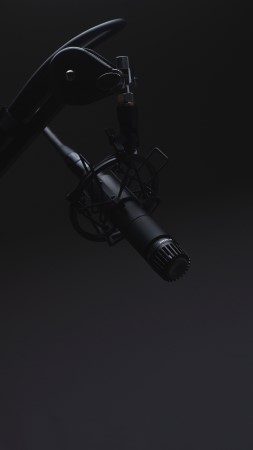
The differences between the Shure SM7B and SM57
There are some major differences between the SM7B and the SM57. Apart from the actual look of the mics, they differ by offering different levels of control over your sound. Whereas one is more forgiving than the other, one is better at capturing the raw energy of a performance.
The major difference comes in what the mics are designed and used for. The Shure SM57 is designed to sit there and record exactly what you want, exactly how it sounds. It takes super loud signals and ensures each nuanced detail is perfectly captured - whether it’s a screaming vocal (Kurt Cobain recorded vocals for Nevermind with it) or a mic’ed up guitar cab cranked to 10. It’s designed for live and studio use.
The SM7B is perfectly suited to capturing high-level vocals but provides more control over your sound via switchable frequency responses. The hi-fi sound you get with detail at lower volumes is exactly why broadcasters love it. It provides that “voice of God” sound. It’s designed for studio use more than anything, but can be used live. It’s also one of the best expensive home recording microphones.
Metallica also used it when recording vocals as seen in the Some Kind of Monster documentary.,
Here are the differences in bullet form:
- The Shure SM57 has a frequency response of 40Hz – 15,000 kHz, while the Shure SM7B has a frequency response of 50Hz – 20,000 kHz. This means the SM7B offers greater detail at higher frequency levels. But the SM57 offers a slight increase in detail at lower levels
- The Shure SM7B requires a preamp with around 60dB of gain to work correctly. The Shure SM57 does not require a preamp. Fortunately, the likes of the Dynamite is budget-friendly and instantly lifts your sound making it more audible. Some audio interfaces offer this gain lift, so look for audio interfaces with built-in preamps.
- The Shure SM7B has onboard controls allowing you to set it at Flat (factory settings) or to engage a High Pass Filter / Low Cut Switch, which reduces the bass frequencies from 300 Hz and provides a more pleasant listening experience in a live situation by taking the unnecessary bass out of vocals. You also have an option to bump the mid frequencies and affect the 900 – 7000 Hz frequency via the Mid Frequency Boost Switch which helps lead vocals stand out over a band or helps add “life” to a dull voice in a podcast.
- The Shure SM57 has no onboard switches.
- The Shure SM7B has a removable windshield and integrated pop filter. The Shure SM57 has a very small pop filter and a very thin windshield underneath it. You can buy a windshield if you wish to use it for vocals (recommended).
- The SM7B is larger than the Shure SM57.
- The Shure SM57 does have a shock mount, but the SM7B has a slightly better one.
- The SM7B provides a hi-fi “voice of god” radio broadcaster sound. The SM57 provides a gritter, natural sound.
- The SM57 gets boomier the closer you get due to the shorter distance of the capsule from the pop filter. The Sm7B has a switchable bass roll-off and is more forgiving when it comes to proximity effect.
- The SM57 can be heard better at a distance than the SM7B. Again, this is due to the capsule placement.
- The Shure SM57 is designed for live instrument applications more so than live vocals.
- The Shure SM7B is designed for live and recorded broadcast, and podcast vocal recording.
- You’ll notice more plosive noises with the SM57 due to the smaller pop filter. You won’t really hear them in a live scenario, but you might hear them in a recording situation unless you use a pop filter.
Frequency Response Differences between the Shure SM57 and Shure SM7B
In summary, the Shure SM57 has a frequency response of 40Hz – 15,000 kHz, while the Shure SM7B has a frequency response of 50Hz – 20,000 kHz.
Why is this important to know?
This difference in frequency response between the SM57 and SM7B shows you why one is better than the other for vocals, and one is better for instrument recording.
Shure SM7B Frequency Response
As highlighted below, the SM7B has a smooth, flat, wide-range frequency response, which is suited to all types of vocals that want to sit nicely within a mix. The Thick dotted line is with the bass roll-off engaged and the thin dotted line is when the presence boost is engaged. When you engage the switch it doesn’t make a HUGE difference, but they will make subtle yet noticeable differences to a recording. You can learn more about why this is important, and why the SM7B is so popular HERE.
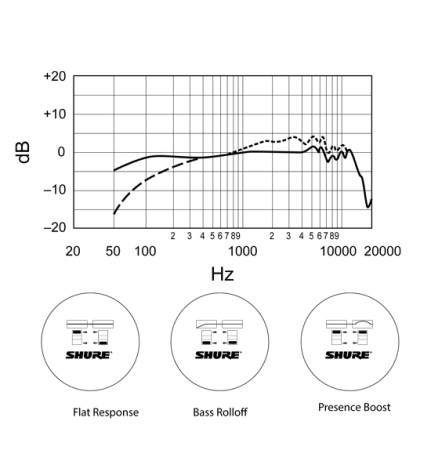
The SM7B provides more detail at the higher ends of the spectrum. The 20,000 Hz frequency response at the high-end captures all the subtle details of your vocal performance. But this is not necessarily needed on an electric guitar or snare drum. It can come in handy with an acoustic guitar though as you want to capture the detail and sonic qualities of your acoustic tonewood.
This high-end detail but slightly lower, low-end detail means you capture the higher, most noticeable frequencies of your voice without unwanted bass boom creeping in. If you are interviewing someone with a particularly low voice, the SM7B can handle it as it cuts off the bass at 50Hz meaning you won’t get the proximity effect. It’s a lot more forgiving than the SM57 and requires far less microphone control if you’re using it for vocals. You can move around and the mic will stick pick up your vocals.
The SM7B is flatter overall (unless you change the switches) so you get a nice, well-rounded, radio-friendly sound!
This is a far more flexible option, which is why it’s relied upon by so many users around the world.
Shure SM57 Frequency Response
The Shure SM57 has a tailored frequency response of 40 Hz - 15 kHz, specifically designed to capture the most useable frequencies. As anything below 40Hz and anything above 15kHz is hard to actually hear, the SM57 cuts it out.
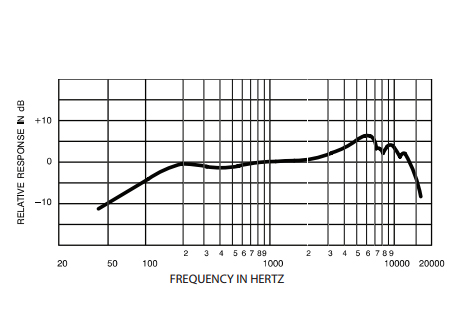
It’s nowhere near as sensitive at the end as the SM7B, but if you’re recording a cranked tube amp or metal snare, you won’t want that top-end sparkle as it can become overbearing. Conversely, the low end of 40Hz offers a subtle yet very noticeable bass boost which can both be a good and bad thing depending on what you’re using it for.
It’s good for guitar cabs, loud brass instruments, and snare drums as it provides a touch more “weight” and bass thickness to the sound. However, when you use it for vocals - if you get too close - the proximity effect will kick in and you’ll not only lose the detail of your voice but be left with a bassy, sound that is not particularly pleasant on the ear. It’s perfectly fine for vocals, except you can’t get as close to it as an SM58 or SM7B without the proximity effect causing mayhem.
One benefit of the SM57 over the SM7B is that the SM57 sounds brighter thanks to the presence boost. This is a major reason why sound engineers love it for guitars as it can bring out the mids of your guitar or bass amp – the area where all the detail lies in your guitar sound.
This mic records instruments really well. So well, in fact, that it’s the industry standard instrument mic owing to its tailored frequency response. When you try to record vocals, however, it can be a little tricker and not as forgiving as the SM7B.
Polar Patterns of the Shure SM57 vs SM7B
Both the SM57 and the Shure SM7B have cardioid polar patterns. However, the SM57 is tighter at close range. This is down to the fact that the capsule is almost completely up against the grille.
This is a key reason why recording artists and studio engineers prefer the Shure SM57 for recording instruments as it completely rejects the off-axis sound and concentrates on the source the closer you get – like a guitar cab or snare.
The SM7B does a better job of rejecting sound when you move back from the mic. This means you can move slightly away from the mic and the SM7B won’t pick up the sound of your room. The SM57 however, will be affected by a poorly acoustically treated room if your sound source is further away from the mic. It will pick up slightly more room noise – which is not always what you want.
Again, this is why the SM57 wins when it comes to close mic’ing, but loses when it comes to recording broadcast vocals as you don’t want to have your mouth right up against the mic at all times to compensate for the room noise.
However, if you want a lo-fi sound – think “Breed” by Nirvana - you’ll love what the SM57 has to offer when recording vocals. Just use a windshield!
Shure SM7B vs SM57 for Recording and Live
So which mic is better for recording and which mic is better for live use when it comes to the SM57 vs SM7B?
Is the Shure SM7B or SM57 better for Live Use?
Based on the different frequency responses and polar patterns, both the Shure SM57 and SM7B are perfectly fine to use for live use. However, they are better suited to different live sound sources.
What about the SM57?
Due to the built-in presence boost, and greater low-end detail, the SM57 is better at representing instruments compared to the SM7B as it retains the weight and bass you need when you’re live mixing a guitar cab, for example. It also forgoes the higher-end detail which is harder for sound engineers to mix onstage. The presence boost brings out the mid-range qualities and the lo-fi sound provides a “livelier” feel. At close contact, you can’t beat it.
For this reason, the SM57 is better for live use when mixing instruments.
However, it can be used for live vocals and was once used by Elton John at his Dodgers Stadium LA 1975 performance. It’s also used by presidents for their live speeches. So it can totally be used in a live scenario for vocals – it’s just not the best option if you HAVE options as the proximity effect can cause issues with live vocal mixing at close range.
The SM57 is regarded as the best guitar and snare cab mic of all time, yet I haven’t heard of anyone using an SM7B on a guitar cab or drum kit. But hey, it might work!
What about the SM7B?
For live vocal sessions with a full band and acoustically treated room or live broadcasting, the SM7B wins hands down. The forgiving polar pattern with switchable frequencies offers more control over your sound. With the SM7B, you get clear, controlled, isolated sounds free of sibilance and plosives thanks to the windshield and pop filter as well as high-end detail with a distinct lack of proximity effect.
You will, however, need a preamp with at least 60dB of gain to use it live – which is not always practical.
In short:
Shure SM57 = livelier, lo-fi sound with presence boost brings out the detail in live scenarios
Shure SM7B = controlled, polished sound quality with a flatter default frequency
Is the Shure SM7B or SM57 better for Recording?
Both the Shure SM7B and the SM57 can be used for recording.
What about the SM7B?
The more controlled, isolated sound from the SM7B is preferable for vocals when you’re broadcasting, recording audiobooks, live streaming or recording vocals for music.
The polar pattern is tighter at a distance and the frequency response is flatter, with subtle changes to make specific vocals clearer or stand out more without overtaking the recording. The pop filter and windshield also reduce plosives and eradicate sibilance which is exactly what you need for recording vocals.
When you record vocals with an SM7B in isolation or as part of a live session, interview or broadcast, it sounds like it’s been pre-recorded and mixed professionally.
You will, however, need a preamp with at least 60dB of gain to use it.
What about the SM57?
When you record vocals with an SM57 you get a livelier, gritty, lo-fi sound that requires better use of microphone technique to offset the proximity effect. However, you might LOVE this as Brandon Flowers recorded ‘Hot Fuss’ with an SM57.
When you record instruments with the SM57, however, you get studio-quality sound at all times. The key benefit here is that the SM57 has an SPL of 190dB – which is louder than a space shuttle taking off. This means it can handle your amp at full volume, the loudest singer or the heaviest snare with ease and capture it in exquisite detail.
In short:
Shure SM57 = livelier, lo-fi sound does not provide a polished vocal sound but offers incredible detail for instruments
Shure SM7B = controlled, polished sound quality offers studio quality vocals at all times
Is the Shure SM7B better than the SM57?
You should choose the SM57 if you want a budget-friendly guitar cab and snare mic that is widely regarded as the industry-standard option. It’s going to last forever, won’t break the bank, and will take your recordings to the next level. You can also use it for vocals with a windshield if you like!
You also don’t need to power it and you can use it to record a vast array of instruments and sound sources.
You should choose the SM7B if you’re recording vocals, broadcasting, or podcasting as it gives you clearer vocals overall. It’s widely regarded as the industry-standard podcast mic, perhaps only challenged by the MV7 so you’re never going to regret buying one to record vocals. You can record your vocals in a live session, take off the windshield to record acoustic guitars and guitar cabinets if you wish, but it’s better suited to vocals.
If you can get both – one for guitars and/or drums and the other for vocals - you’ll never need another mic for recording anything.
Final Thoughts & Conclusions
At the end of the day using a mic is always subjective. So I always suggest trying out as many options as possible. But if you’re going to build your own studio for recording music and vocals, you can’t go wrong with an SM7B and SM57 combo. For live bands, the SM57 is an essential purchase that doubles as the best mic to record guitar cabs.
Both mics are completely essential purchases. But if you had to choose, always remember:
SM57 = Live and recorded instruments + recorded vocals in a controlled setting
SM7B = Live vocals in a broadcast setting + recorded vocals in a studio
You won’t ever regret buying either mic as they are investments in themselves. Just pick the right one and you’ll instantly improve your sound.
Need help picking out new studio and recording gear? Call us on 0151 448 2089 or check out your local store to speak to one of our Experts about your needs.

